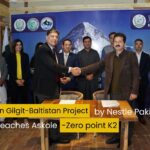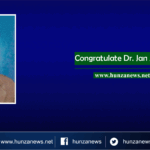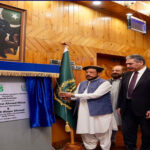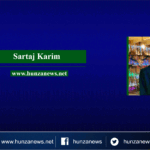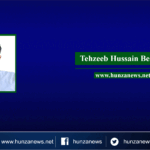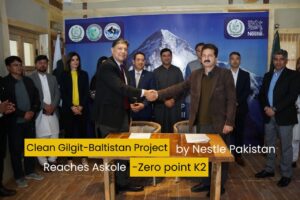Thursday, December 19, 2013
“In Islam, the Holy Quran offers explicit direction to share resources beyond one’s requirements, and to care for the poor and those in need.”
These are the words of His Highness Prince Karim Aga Khan, Aga Khan IV and spiritual leader of the Shia Imami Ismaili Muslims, upon receiving the Carnegie Medal for Philanthropy in 2005.
The Canergie Medal is just one of many awards and decorations the Aga Khan has received from countries all over the Globe in recognition of his development work. Although he is often accorded the protocol due to a Head of State and enjoys the influence of a statesman, Aga Khan IV has eschewed politics in favour of development and the preservation and revival of Muslim Cultural Heritage. During his time as Imam he has built institutions that assist not only Ismailis but deprived communities worldwide.
Aga Khan IV was born in Geneva on December 13th 1936. He is the son of Prince Aly Khan and Princess Tajuddawlah Aly Khan and spent his early years in Nairobi, Kenya. He attended Le Rosey School in Switzerland and then continued to Harvard University where he studied Islamic History. He is a direct descendant of the Prophet Muhammad (peace be upon him) through his cousin and son-in-law, Ali, the first Imam, and his wife Fatima, the Prophet’s daughter. At the age of 21 he assumed the office of Imamat, upon the death of this grandfather Sir Sultan Mahomed Shah Aga Khan.
Prince Karim Aga Khan is a progressive paradox. He is a liberal, urbane Muslim leader in a time when polarized schools of thought dominate the media. Yet his deeply intellectual speeches show strength of faith, a determination to adhere to the principles of Islam and fierce pride in Islamic heritage.
In a Convocation Address at the University of Peshawar in 1967, for example, he discussed the importance of traditional values, how in their endeavour for material good, Muslims should not forsake their responsibilities to the poor, the orphan, the traveller, or the single woman; nor should they neglect their duty of submission to the Creator: “The day we no longer know how, nor have the time nor the faith to bow in prayer to Allah because the human soul, that He has told us is eternal, is no longer of sufficient importance to us to be worthy of an hour of our daily working, profit-seeking time, will be a sunless day of despair.”
He articulates a more tolerant version of Islam in an age when Islam is much maligned and misunderstood. He shows how the principles of pluralism and assisting social development are rooted in Islam and puts these principles into action. He evinces great pride in Muslim heritage and has worked to preserve and revive Muslim cultural heritage in diverse areas of the world.
Through the Aga Khan Development Network (AKDN), the Aga Khan has tackled the age-old problems of poverty and deprivation with innovative approaches and notable success for over 50 years. Communities all over the world, from Gilgit in Pakistan to Timbuktu in Africa have benefited from the programs of the AKDN, no matter what their faith, race or gender.
Over the years AKDN has developed effective programs that have been replicated by both NGOs and governments. The AKDN has a reputation for integrity, fairness and of working to the highest international standards. This has enabled it to enter into collaborations with both governments and large international institutions, bringing an enhanced level of expertise and funding to its projects.
A recent example of this is The French Medical Institute for Children (FMIC). This not-for-profit hospital in Kabul is dedicated to providing world-class medical services and improving access to quality healthcare in Afghanistan. The hospital is run through an innovative four-way partnership between the Government of Afghanistan, the Government of France, the Aga Khan Development Network and the French NGO, La Chaîne de l’Espoir, with Aga Khan University managing FMIC on behalf of AKDN.
The hospital is deeply involved in training local doctors and nurses to international standards and is a center for referral throughout the region. The generous welfare program ensures that no one is turned away because of an in ability to pay. Since 2006 over 200,000 patients have benefitted from the welfare program regardless of the religion or ethnic background. Moreover FMIC has introduced a groundbreaking eHealthcare program that uses technology to bring improved healthcare to remote regions. Patients who are physically unable to get to FMIC from faraway areas can benefit from tele-consultations and tele-radiology and pathology analysis.
A key player in the success of FMIC is the Aga Khan University. AKU is one of Pakistan’s foremost institutions and the Aga Khan University Hospital has revolutionized healthcare in Pakistan. Not only has it brought world-class healthcare to Pakistan, AKUs Faculty of Medical Sciences has educated countless nurses and doctors. The hospital’s Welfare program ensures that poverty doesn’t prevent those in need from getting top class care.
The Hospital and primary medical centres are part of the Aga Khan Health Services, which is one of the most comprehensive private not-for-profit health care systems in the developing world. In Pakistan, its 164 health centres, seven hospitals, maternity home, two medical centres, physiotherapy unit and seven community dental units reach over 581,000 people in rural and urban Sindh, Punjab and Frontier, Northern Areas and Chitral. Aga Khan Hospital Services (AKHS) now provides primary health care and curative medical care in India, Pakistan, Kenya, Tanzania, and Syria. It includes five general hospitals, seven maternity homes/hospitals and 187 health centres/dispensaries.
Education is another of the Aga Khan’s passions. It is an area that has been traditionally emphasized by Ismaili Imams. The Fatimid Caliphs founded Al-Azhar University in Cairo. In more recent times, Prince Karim’s grandfather Aga Khan III set up the Diamond Jubilee Schools in India, Pakistan and Africa and emphasized the importance of education, particularly for women. Prince Karim Aga Khan chose Pakistan as the base for the Aga Khan University. Chartered in 1983, AKU is Pakistan’s first private international university. With academic programmes in Pakistan, East Africa, the United Kingdom, Syria and Afghanistan, AKU has now established itself as an international institution with ten sites in seven countries.
Meanwhile the AKDN spearheaded the rebuilding of the Bibliotheca Alexandrina in Egypt, the legendary ancient library built in classical Greek times. The rebuilding of the library has returned Alexandria to its former status as a centre for learning and exchange and provided the city with a landmark building.
Away from the realms of higher education, Aga Khan Education Services Pakistan provides access to schooling for 75,000 students, operating 186 schools and four hostels across Pakistan. In East Africa, the Madaresa Pre-School Programme helps indigenous Sunni Muslim African communities, amongst the most marginalized in the region. It provides a mode of early childhood education that is rooted in their culture and tradition but also incorporates educational activities that help their children enter into mainstream education.
Another crucial area that the Aga Khan has focused on during his Imamat is the preservation of Muslim heritage. The Aga Khan Award for Architecture, the most lucrative Architecture Awards in the world, grew from a realization that traditional Islamic architecture was disappearing in the face of modernization. The award was announced at the Islamic Summit Conference in Lahore in 1976. On October 23rd 1980, when the first award was awarded in the Shalimar Gardens Lahore, few new buildings and spaces in the Muslim world remained true to the architectural traditions of the Islamic world and a key part of Muslim heritage was in danger of being lost. Nowadays, largely thanks to the impetus provided by the Award, the best architecture in the Islamic world once again reflects its traditional roots.
AKDN has also overseen the restoration of Muslim heritage sites all over the world. It won a 2011 UNESCO Award for Culture Heritage Conservation for its restoration of the 900 year old Altit Fort in Pakistan. In Timbuktu, Mali His Highness recently restored the mud walls of the 14th-century Djingereyber Mosque, the oldest earthen building in sub-Saharan Africa. Most spectacularly, a 32 acre dumping ground in Cairo was transformed into one of the beautiful parks in the world, which attracts over 2 million visitors a year.
The story of Al-Azhar park in Cairo is fascinating. For as far as people could remember it was a foul smelling rubbish tip. Adjacent to it was a slum – in and around dilapidated historic buildings of the Darb al Ahmar area over 200,000 people lived in abject poverty. Seeing the rubbish tip during a visit to Cairo in 1984 the Aga Khan offered to turn the 32-acre dump into a spectacular green park at a gift to the city of Cairo. A major social development project was also launched to regenerate the Darb Al Ahmar area. Local residents were trained in restoration skills and 200 of them are still employed at the site. The reconstruction work revealed important archeological finds. Ancient walls, gates, 6 historic mosques and dozens of houses and palaces were discovered and restored during the course of the project. Simultaneously neighbourhood health and education services were launched, along with a micro-credit program. Though initially all the inhabitants were squatters, now a 24% have title to their properties. Literacy rates have gone up by a quarter while family earnings increased one-third faster than in the whole of Old Cairo. Meanwhile in 2005, work on the park was completed and Al-Azhar park was opened to the public. It is a remarkable space, based on historic Islamic gardens, with an appealing blend of modern and traditional elements. It features bustan-like orchards, formal terraced gardens, sunken gardens and intersecting waterways. Bold Islamic geometry and Fatimid archways complement shaded sitting areas (takhtaboush) while Persian and Tirmud influences also abound. Fountains and scenic outlooks are a major feature of the park, which also includes a children’s playground, cafes and other amenities. The beautiful park has transformed Cairo which was previously almost without public green spaces.
As well as being a showcase for the tradition of Islamic gardens, Al-Azhar Park also provides employment for the community around it, both directly and indirectly. It also generates a surplus of $800,000 a year from entrance fees, parking fees, retail sales and licence fees for special events. This surplus is reinvested in the same area to ensure long-term sustainability.
In his speech to the UNESCO Conference on Culture and Development in Hangzhou, China, the Aga Khan explained his theory of how restoring cultural heritage sites can be used as a catalyst for development. As well as focusing on Al-Azhar park, he described his experience in Northern Pakistan,
“Some of our most interesting work and challenges have come in the high mountain valleys of Northern Pakistan. The cultural lynchpin has been the restoration and repurposing of historic forts and palaces, watchtowers and mosques, homes and markets – expanding jobs and diversifying the economy. As you know, the mountain terrain not only separates Northern Pakistan from neighbouring regions, but it also isolates communities of each valley, one from the other. And yet, as word of the restorations spread, people of other villages began to ask, “How can we share in this work?” It was a heartening example of regional cohesion growing out of cultural diversity.”
One of the innovative aspects of AKDN’s work that has been replicated time and again is community participation. Communities are encouraged and assisted to be a central part of the development process. Development is treated as a multi-faceted goal and areas as diverse as healthcare, education, sanitation, infrastructure and income generation are targeted simultaneously. AKDN has never been about short-term handouts that will fill stomachs today and leave them empty tomorrow. Their long-term approach aims to regenerate deprived areas and make them self-sufficient. Many communities that received AKDN support now have well educated communities that have achieved substantial cash savings. These communities are no longer dependent on outside support and can fund their own schools, health centers and other development projects. They have learned to respect and utilize their cultural heritage and their environment, whether it be through tourism or planting orchards.
AKDN has also benefited enormously from the support of the Ismaili community with its tradition of philanthropy, voluntary service and self-reliance, and the leadership and material underwriting of the hereditary Imam and Imamat resources. Despite this it firmly remains a non-demoninational institution, helping all those in need regardless of race, religion or gender.
Another major strength of the Aga Khan’s institutions is their reputation for integrity. No matter which country they are in, no matter what the cultural norms, they will neither give nor take bribes nor will they engage in unethical practices. In an address by His Highness the Aga Khan to the School of International and Public Affairs, Columbia University (New York, USA) he discussed the importance of integrity, explaining how public integrity is the responsibility of every individual, whether they are a labourer, teacher, lawyer or politician.
“Let me finally emphasize my strong conviction that public integrity cannot grow out of authoritarian pronouncements. It must be rooted in the human heart and conscience. As the Holy Quran says: “There is no compulsion in religion”. The resurgence of spirituality – potentially such a positive force – can become a negative influence when it turns into self-righteousness and imposes itself on others. Like all of the world’s great religions, Islam warns against the danger of comparing oneself with God, and places primary emphasis on the qualities of generosity, mercy and humility.”
As spiritual leader of the Shia Imami Ismaili Muslims and as head of one of the most successful development networks in the world, Aga Khan IV has made a significant impact during his time as Imam. The Aga Khan University and its Hospital are centers of learning and excellence. Hundreds of thousands of patients have benefited from the facilities and welfare programs provided by the hospital. Doctors and nurses trained by the University are to be found in countries as diverse as Kenya and Canada. Development projects from Mali to Delhi have provided communities with the skills and resources to be self-reliant. New Architecture in the Muslim world once more reflects its Islamic heritage. The Al Azhar Park provides Cairo with a beautiful heirloom that reflects the best traditions of Islamic gardens. Historic mosques and other heritage sites have been restored in diverse areas of the world. His commitment to integrity, tolerance, pluralism and the ethics of Islam are inspiring. Thus far the Aga Khan’s legacy tells the complex story of a Muslim leader who is comfortable in the contemporary world; one who can embrace the benefits of the modern world while remaining loyal to his Islamic roots.
SC The News


